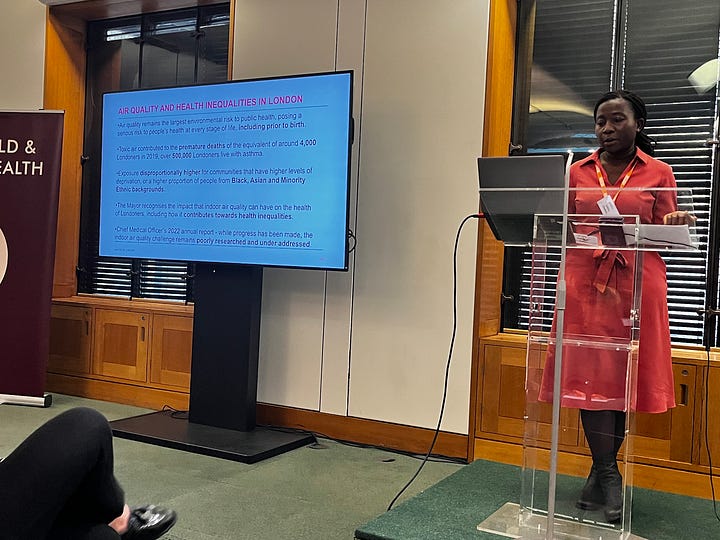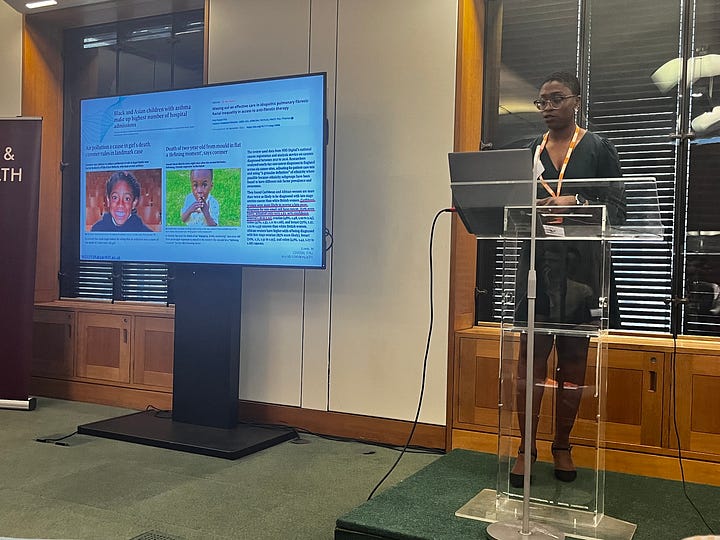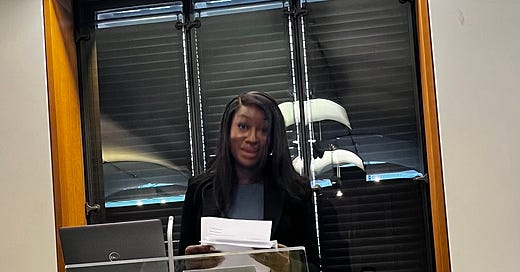Louise was delighted to attend the Global Child and Maternal Health conference in Parliament a few weeks ago, organised by the indomitable Agnes Agyepong and opened by Bell Ribeiro-Addy MP. This is the team that launched the important Black Child Clean Air report, highlighting the systemic injustices for black communities, and women and babies in particular. They have now expanded their work even further to take a global view.




The wealth of data and insights presented at the conference was huge and hard to summarise. But a theme in the conference was indoor air pollution, a topic we cover less often in this blog. We often hear the statistic that we spend 90% of our time indoors, so the air we breathe in these spaces is important.
Key learnings from the event:
spikes in indoor pollution can come from unexpected sources such as candles and hair straighteners (as well as arguably more predictable ones such as wood burning and cooking on gas stoves)
homes that use wood burners experience three times more pollution than the rest (as well as contribute to outdoor pollution)
there are other types of pollution that affect indoor settings compared to outdoor or ambient pollution - including mould, which can take many different forms and vary hugely in severity
children are also affected by indoor pollution in schools, which is becoming a bigger focus for the Mayor of London
children of black and asian backgrounds with asthma make up the largest number of hospital admissions.
What can be done?
Arguably a reason there is less focus on indoor pollution is because of the private nature of many spaces, making it harder for policy interventions. Awaab’s law is putting additional requirements on social landlords in relation to damp and mould. And Global Action Plan is calling for gas stoves to be phased out in new builds this year.
The Equal Breath Priority Setting Partnership aims to encourage involvement from communities to address the unequal impact of lung disease on black communities. And Louise heard from a researcher with the WELL home project about how they are engaging communities in West London to understand priorities for addressing indoor pollution.
Congratulations to all the presenters for shining a light: Dr Michelle Peter, Dr Diana Varaden, Dr Karen Joash, Farid Kelekun, Larissa Lockwood, Debbie Obafemi and Dr Sope Wolffs.
In another first…
We were cited in this peer-reviewed journal article by Imperial college researchers, out this week. Suitably enough, it focused on participatory approaches to air pollution monitoring and engagement. It has just been confirmed that this team will continue to support the Breathe London Community Programme into the next phase of work and we are excited to keep working with them!




